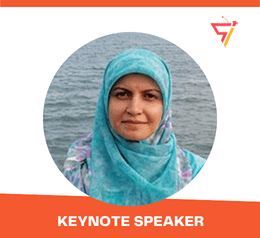Scholars International Conference on
Optics, Photonics and Lasers
THEME: "Frontiers in Optics, Photonics and Lasers Research"
 22-24 Jun 2022
22-24 Jun 2022  NH Potsdam | Berlin, Germany & Online
NH Potsdam | Berlin, Germany & Online THEME: "Frontiers in Optics, Photonics and Lasers Research"
 22-24 Jun 2022
22-24 Jun 2022  NH Potsdam | Berlin, Germany & Online
NH Potsdam | Berlin, Germany & Online 
Purdue University, USA
Title: From Dipolar to Rydberg Photonics: Harnessing Atom-Atom Interactions
Hadiseh Alaeian got her Ph.D. in Electrical Engineering and Physics from Stanford University in 2015. After her graduation, she moved to the University of Bonn in Germany as a Humboldt postdoctoral fellow in 2016 to work on Bose-Einstein condensation of photons in an optical cavity. During 2017-2020 she was a group leader in the Integrated Quantum Science and Technology center in Max Planck Institute of solid-state systems and the University of Stuttgart, Germany. Her interdisciplinary research interest is at the interface of atomic physics, quantum optics, and Nano-photonics. There, she aims to utilize strongly-interacting photons for studying many-body quantum phenomena. Hadiseh is the recipient of the silver graduate award from the Materials Research Society of America in 2015, the Humboldt postdoctoral fellowship in 2016, and the early researcher award from the Baden-Württemberg Foundation, Germany in 2018 and 2019.
Light-induced atom-atom interactions at densities higher than 1 atom per cubic wavelength give rise to density shifts and broadenings. When confined in less than a wavelength size, such dipolar interaction leads to collective blockade phenomena, which mostly have been studied in the context of strongly interacting Rydberg states. Here we study these phenomena for low-lying excited atomic states confined in thin atomic clouds that are generated via pulsed Light-Induced Atomic Desorption (LIAD) technique. For the first few nanoseconds, the transient light-induced dipolar interaction of the low-lying lines of Rubidium leads to shifts and broadenings well beyond the well-known Lorentz-Lorenz limit. In the second experiment, we benefit from highly controllable fields of Nano-photonic devices to manipulate the many-body dipolar interactions. We interface the atoms with the tightly-confined field of a slot waveguide, where the Purcell enhancement modifies the interactions and the shifts, further. The latter experiments are done at telecom wavelength where one can integrate the collective quantum effects such as the blockade to create deterministic on-demand single-photon emitters. Towards the end of my talk, I will introduce our novel quantum material, thin-film cuprite, that allows us to realize strongly interacting Rydberg excitons in a solid-state platform that is inherently suitable for scalable and integrable quantum photonic technologies.